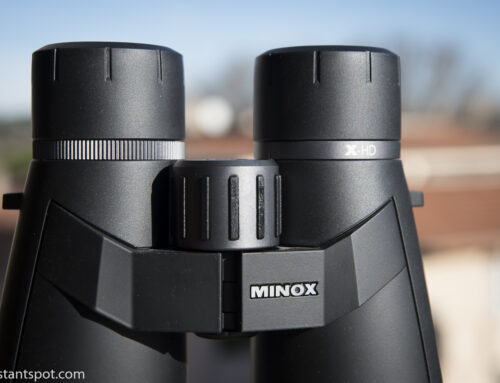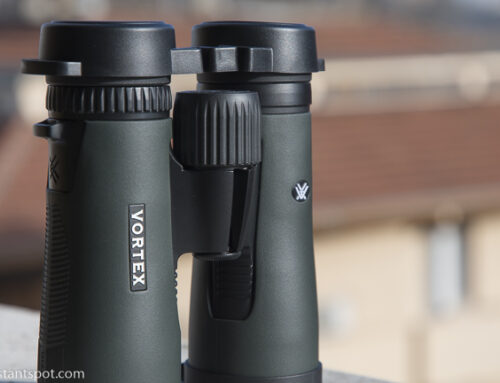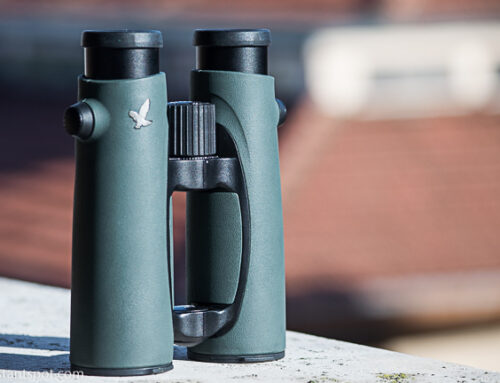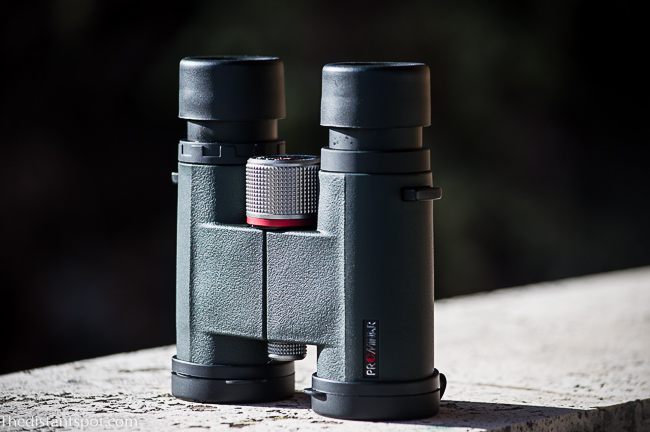Kowa BD 8×32 Prominar XD
Intro
They are very good binoculars, small and not too expensive. Of course, some compromises must be accepted.
For the occasion, I will compare them with my Nikon Prostaff 7S 8×30 and, in some respects, with the Minox BL 8X33 HD.
Construction
The binoculars are slightly larger than the Nikon (also with regard to the diameter of the lenses), but, even with their case, they are less bulky overall.
They are really small and manageable, which is great considering that binoculars that you carry easily have more chance of being used.
Since they are binoculars for daytime use, that can be used as travel binoculars as well, that is, in my opinion, a fundamental characteristic. In fact, I believe that dimensions are a critical factor for these kind of binoculars.
Aesthetically beautiful, they have a thick rubber coating that looks solid and is not sticky. The silver focus rotor, with its red ring, is perhaps a little too showy, but it’s a matter of taste. The risk, on the other hand, would be to appear quite anonymous.
The hull does not have a central window and the bridge is very large, occupying almost all the space between the two optical tubes. Considering their small dimensions, this makes the binoculars quite uncomfortable to hold firmly in the hand. I think that’s their only real flaw in terms of construction.
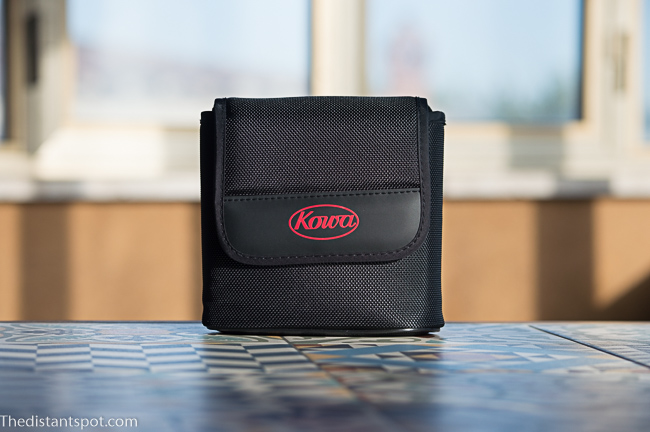
Optical qualities
The Kowa is an excellent tool in relation to its price, although it still suffers from some defects. Anyway, given its price, that was impossibile to avoid. I still believe that the available budget has been managed very well and that the producer have chosen wisely where to cut the costs.
Chromatic aberration
It is one of their best corrected optical defects. It is practically invisible in the center of the image and it is barely noticeable at the edge, and only in high contrast situations.
Looking at the star Sirius, that shines very bright against the dark background of the sky, you can see a blue halo even at the exact center of the image, but that is a very hard test.
In general, however, chromatic aberration is visibly lower than that present in my Swarovski EL 8.5×42 W B. Although chromatic aberration is perhaps the main defect of the Swarovski, given the price difference, I believe there is no need to add further comments.
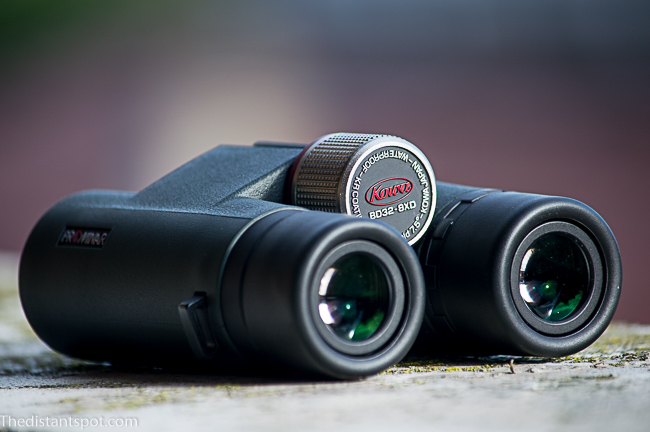
Sharpness
The binoculars are very sharp. The details are engraved almost like in the alpha binoculars: the sharpness in the center of the image (but only there) is comparable to that of the Swarovski.
Horizontally, the image is sharp almost to the edge, while vertically, it is sharp at least to 75% of the frame, where the field curvature begins to make it less readable, but without too much quality loss.
The Nikon are sharp too, but less: the image has an overall sense of softness that is absent in the Kowa.
The Minox were the least clear of the three.
Astigmatism
As I said, this is certainly not a pair of binoculars to observe the night sky, however the astigmatism is corrected quite well, in a way similar to that of the Nikon. The Swarovski is clearly superior.
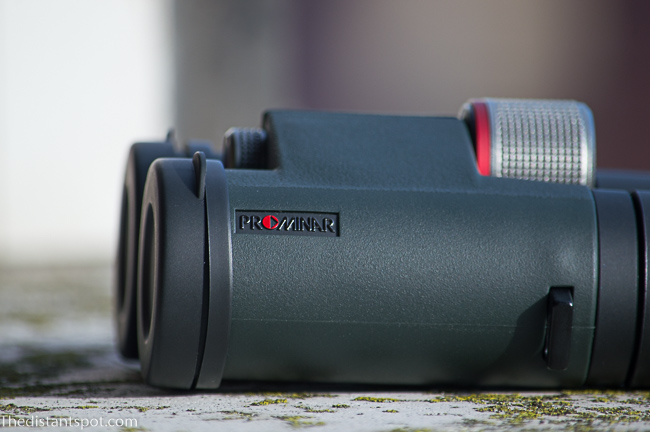
Coma
It is clearly evident as soon as you move away from the center of the image, although the star Sirius is a difficult subject. However, the image remains good almost to the middle of the field.
The Nikon behaves a little worse, especially on the edge.
Tint
The color seems substantially correct, but it lean towards the cold tones, like the Nikon. The Minox, on the other hand, had a yellowish color that, even being less correct, made for a very restful observation.
The intensity of the color is sufficient: the Nikon is more faded, the Swarovski much brighter.
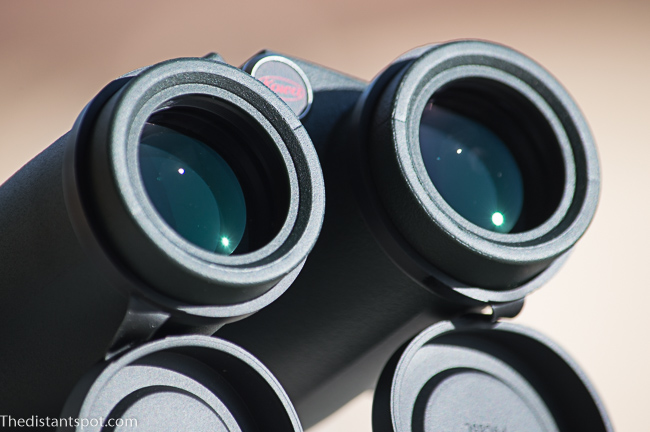
Reflections and stray lights
Observing the street lamps at night you notice spikes that are not too flashy, with a reflection on the opposite side of the image. The Nikon have strange star-shaped spikes, with soft light all around, but with no reflections. The Swarovski don’t usually have spikes, but show several of them if pointed towards very strong and close lights (which, outside of the test, would be quite uncommon).
Distortion
There are no obvious deformations of the image.
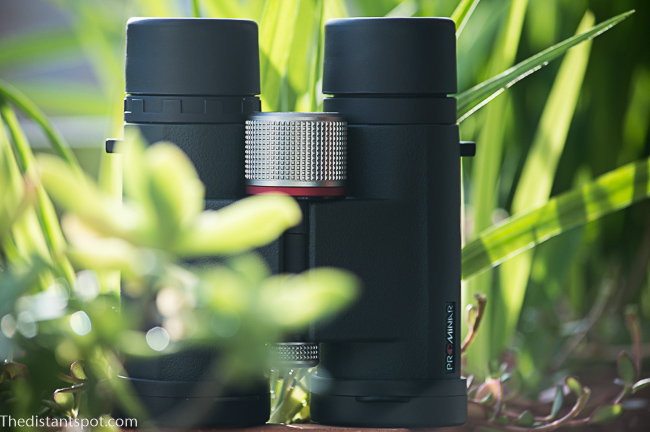
Other aspects
Probably the biggest problem with the Kowa is related to the positioning of the eyes when observing. From this point of view, they are not tolerant at all: a small shift here or there, or even an insufficient separation of the optical tubes, results in immediate and annoying blackouts. Since it is quite difficult to find the correct position at the first try, it is unlikely that you will be able to observe comfortably the same moment you grab the binoculars.
The Nikon are much easier to place and blackouts only occur if you move your eyes to look towards the sides of the framed image.
The Minox were even more comfortable: the position was practically always correct and observing was pleasant and very relaxing.
The edge of the image is not dark and clean as I would like, but it is quite soft and blurry (the Nikon are much better in this respect and almost as good as the Olympus 10×42). However, the drop in brightness is not too obvious.
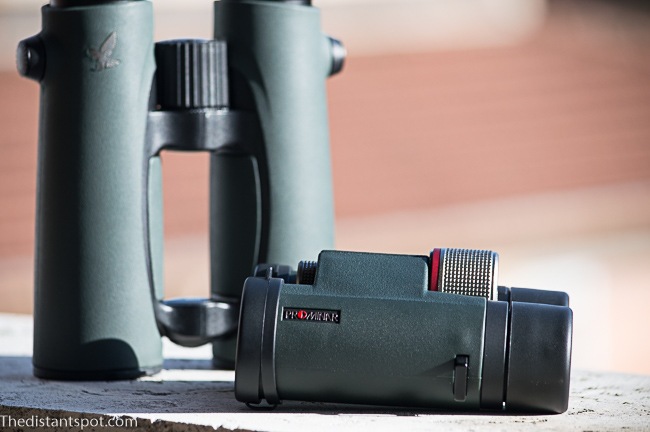
Conclusions
The Kowa BD 8×32 Prominar XD is a great pair of binoculars. Unfortunately it is not a pair of binoculars that I would call “relaxing”. Every time I use them I find myself fighting with positioning and focusing, as if there is always something to correct. The Nikon is much easier to use, and the Minox is even easier.
And yet, of all three, these have become my travel binoculars.
I think that, if you can accept the defects I described, considering the small size, the excellent optical qualities and their low cost, it is really difficult to find anything better.
Kowa BD 8×32 Prominar XD
Intro
They are very good binoculars, small and not too expensive. Of course, some compromises must be accepted.
For the occasion, I will compare them with my Nikon Prostaff 7S 8×30 and, in some respects, with the Minox BL 8X33 HD.
Construction
The binoculars are slightly larger than the Nikon (also with regard to the diameter of the lenses), but, even with their case, they are less bulky overall.
They are really small and manageable, which is great considering that binoculars that you carry easily have more chance of being used.
Since they are binoculars for daytime use, that can be used as travel binoculars as well, that is, in my opinion, a fundamental characteristic. In fact, I believe that dimensions are a critical factor for these kind of binoculars.
Aesthetically beautiful, they have a thick rubber coating that looks solid and is not sticky. The silver focus rotor, with its red ring, is perhaps a little too showy, but it’s a matter of taste. The risk, on the other hand, would be to appear quite anonymous.
The hull does not have a central window and the bridge is very large, occupying almost all the space between the two optical tubes. Considering their small dimensions, this makes the binoculars quite uncomfortable to hold firmly in the hand. I think that’s their only real flaw in terms of construction.

Optical qualities
The Kowa is an excellent tool in relation to its price, although it still suffers from some defects. Anyway, given its price, that was impossibile to avoid. I still believe that the available budget has been managed very well and that the producer have chosen wisely where to cut the costs.
Chromatic aberration
It is one of their best corrected optical defects. It is practically invisible in the center of the image and it is barely noticeable at the edge, and only in high contrast situations.
Looking at the star Sirius, that shines very bright against the dark background of the sky, you can see a blue halo even at the exact center of the image, but that is a very hard test.
In general, however, chromatic aberration is visibly lower than that present in my Swarovski EL 8.5×42 W B. Although chromatic aberration is perhaps the main defect of the Swarovski, given the price difference, I believe there is no need to add further comments.

Sharpness
The binoculars are very sharp. The details are engraved almost like in the alpha binoculars: the sharpness in the center of the image (but only there) is comparable to that of the Swarovski.
Horizontally, the image is sharp almost to the edge, while vertically, it is sharp at least to 75% of the frame, where the field curvature begins to make it less readable, but without too much quality loss.
The Nikon are sharp too, but less: the image has an overall sense of softness that is absent in the Kowa.
The Minox were the least clear of the three.
Astigmatism
As I said, this is certainly not a pair of binoculars to observe the night sky, however the astigmatism is corrected quite well, in a way similar to that of the Nikon. The Swarovski is clearly superior.

Coma
It is clearly evident as soon as you move away from the center of the image, although the star Sirius is a difficult subject. However, the image remains good almost to the middle of the field.
The Nikon behaves a little worse, especially on the edge.
Tint
The color seems substantially correct, but it lean towards the cold tones, like the Nikon. The Minox, on the other hand, had a yellowish color that, even being less correct, made for a very restful observation.
The intensity of the color is sufficient: the Nikon is more faded, the Swarovski much brighter.

Reflections and stray lights
Observing the street lamps at night you notice spikes that are not too flashy, with a reflection on the opposite side of the image. The Nikon have strange star-shaped spikes, with soft light all around, but with no reflections. The Swarovski don’t usually have spikes, but show several of them if pointed towards very strong and close lights (which, outside of the test, would be quite uncommon).
Distortion
There are no obvious deformations of the image.

Other aspects
Probably the biggest problem with the Kowa is related to the positioning of the eyes when observing. From this point of view, they are not tolerant at all: a small shift here or there, or even an insufficient separation of the optical tubes, results in immediate and annoying blackouts. Since it is quite difficult to find the correct position at the first try, it is unlikely that you will be able to observe comfortably the same moment you grab the binoculars.
The Nikon are much easier to place and blackouts only occur if you move your eyes to look towards the sides of the framed image.
The Minox were even more comfortable: the position was practically always correct and observing was pleasant and very relaxing.
The edge of the image is not dark and clean as I would like, but it is quite soft and blurry (the Nikon are much better in this respect and almost as good as the Olympus 10×42). However, the drop in brightness is not too obvious.

Conclusions
The Kowa BD 8×32 Prominar XD is a great pair of binoculars. Unfortunately it is not a pair of binoculars that I would call “relaxing”. Every time I use them I find myself fighting with positioning and focusing, as if there is always something to correct. The Nikon is much easier to use, and the Minox is even easier.
And yet, of all three, these have become my travel binoculars.
I think that, if you can accept the defects I described, considering the small size, the excellent optical qualities and their low cost, it is really difficult to find anything better.


